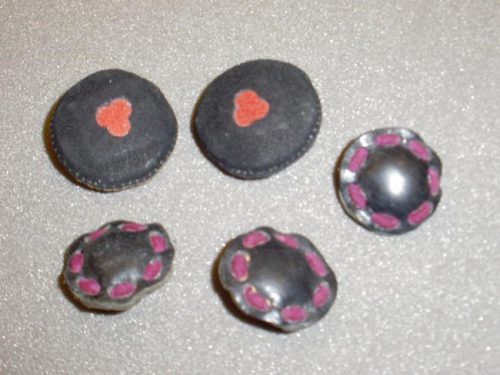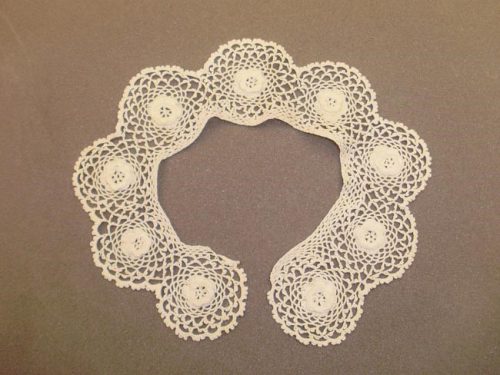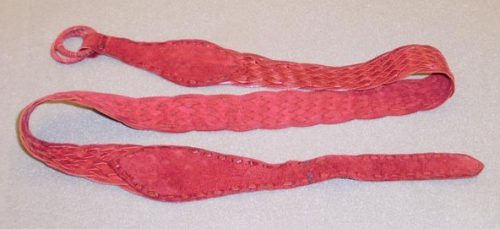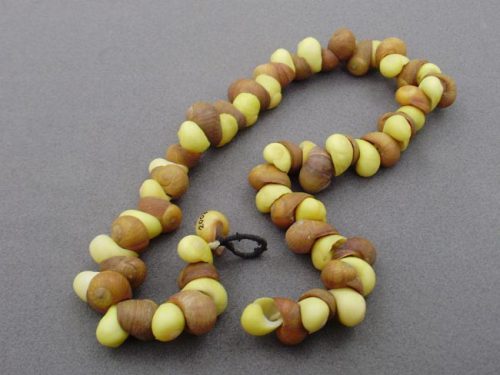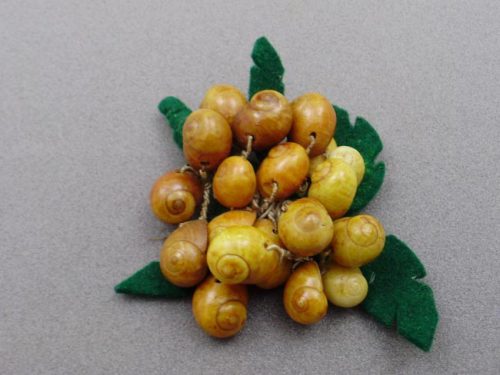Rushen Camp: Second World War Internment on the Isle of Man
This article is the last in a four part series about Civilian Internment on the Isle of Man during the Second World War.
Rushen Camp
The second camp to be opened on the Isle of Man was very different from all the others on the Island as it was run by the Home Office rather than by the military authorities.
Rushen Camp was the only civilian camp on the Island (and much further afield) to hold women and children as ‘enemy alien’ civilian internees. Unlike their male counterparts, they were billeted with local families rather than held in requisitioned boarding houses. As a result when Rushen Camp opened on the 30th May 1940, all the occupants of Port St Mary and Port Erin – local residents and enemy aliens – were to be found living together behind the wire.
Instead of losing their homes and livelihoods (although they did receive compensation), the local boarding house keepers in Port Erin and Port St Mary continued to have a home and were paid a guinea a week for each internee living with them. This meant that instead of just having paying guests and holidaymakers for the summer season (as they did before the war), they were earning money from their new ‘guests’ all year round whilst their property was still inside the wire and part of the camp.
Another significant difference between Rushen Camp and the other internment camps on the Island was in the make-up of the internees in the camp in the summer of 1940. Whilst other camps predominantly held those who had arrived in Britain as refugees from Nazi persecution (Jewish and political refugees), Rushen Camp was far more mixed in terms of its ‘enemy aliens’: many were Jewish and political refugees but others were economic migrants who had come to Britain in the 1930s in search of work together with German and Austrian nationals who were in Britain for a variety of other reasons. As a result, the political allegiances of the women ranged across a wide spectrum from anti to pro-Nazi, together with those in the middle who expressed no particular political allegiance. Therefore not all the interned women wanted to be released to work for the Allied war effort but instead wanted to be repatriated ‘home’ to Germany and Austria.
Originally Rushen Camp had a boundary drawn from Fleshwick to Gansey, so that the entire southern peninsula was behind barbed wire. Even when the boundaries were changed, a great advantage of being interned in Rushen Camp was the access to the fields around Port Erin and Port St Mary. The summer of 1940 was particularly hot and sunny so even more important was the internees’ access to the beaches and the opportunity to be able to go swimming.
As with life in all the internment camps on the Island, keeping busy and keeping oneself occupied was always seen as being an important part of coping with ‘living with the wire’, the threat of invasion and the not knowing when and if one would be released. With materials in short supply but people still wanting something new or nice to wear for themselves or to make as a present to give someone or to sell to make money – the female internees became very creative in their use (and reuse) of rationed materials and any scraps they could get hold of. This might include unpicking an old jumper to knit a new cardigan, collecting seashells along the beach to make pieces of jewellery or purchasing a Manx white woollen blanket (which wasn’t on ration) to make into a new winter coat.
Although some of the female internees had access to money many didn’t, so an unusual and innovative solution was found to answer this problem – the creation of the Service Exchange. The underlying principle behind the scheme was that people did whatever they could do best e.g. sewing, knitting, toy-making etc and they would be paid in tokens which they could then exchange for someone else’s services e.g. hairdressing, language tuition etc.

Illustration from The Onchan Pioneer (Onchan Camp newspaper) July 1941, describing an exhibition of handicrafts produced by the female internees and highlighting the variety of things made in the Women’s Camp.

How to stay warm (and fashionable) during wartime and rationing – a pair of hand knitted woollen gloves with a fashionable Fair Isle-style pattern. The gloves were made by an internee in Rushen internment camp using Manx wool (which was not on ration during the War) and sold at Collinson’s cafe craft shop (run by the internees) in Port Erin. Purchased by the donor who worked as a secretary at the Rushen camp. IOMMM: 1995-0186/8
Ways to improve and update any outfit…

Update any outfit with a new pair of crocheted gloves – a different coloured pair of gloves could equal a totally different outfit
Presents for friends – on both sides of the wire

A small token of appreciation made by a female internee for Dr Robert Marshall, the Rushen Camp’s Medical Officer (a hand-carved wooden plaque – possibly made from old floorboards and smaller pieces of hardwood). IOMMM: 1992-0123

A Christmas present given to the Camp Commandant, C.R.Cuthbert and his wife by Professor Gerhard Bersu and his wife, Mrs Maria Bersu. The buttons were made from wood excavated from the Ballacagen Iron Age roundhouse excavation. IOMMM: 2005-0057
At its height the camp held 3,000 to 4,000 interned women and their children but it shrank both in terms of its physical size and terms of in numbers over time as the interned refugees were released and by 1944 some of the remaining internees were repatriated to Germany. The last remaining internees left the Island in September 1945 and with the closure of Rushen Camp, the final chapter of Manx internment during the Second War came to a close.
Further Information
Want to discover more about the Isle of Man during the Second World War? Here are further resources:
- Island of Barbed Wire: The Remarkable Story of World War Two Internment on the Isle of Man by Connery Chappell
- Living with the Wire: Civilian Internment in the Isle of Man during the two World Wars by Yvonne M. Cresswell
- Involuntary Guests: Enemy Aliens and Political Detainees on the Isle of Man in World War Two by Alan Franklin, Edited by Matthew Richardson
- Isle of Man at War 1939-45 by Matthew Richardson
- Friend or Foe? – The Fascinating Story of Women’s Internment During WWII in Port Erin and Port St Mary, Isle of Man by Rushen Heritage Trust
Discover more about internment on the Isle of Man in the Manx National Heritage Library and Archives.
Find out how the Manx newspapers reported the War and what stories from the internment camps made the local news: https://www.imuseum.im/newspapers/
If you want to discover more about internment and see a variety of internee-made items – visit the Mann at War Gallery and National Art Gallery at the Manx Museum or take a look at our online resource Explore Mann at War.
Yvonne M. Cresswell (MNH Curator of Social History)
Blog Archive
- Edward VII’s Coronation Day in the Isle of Man (9 August 1902)
- Victoria’s Coronation Day in the Isle of Man (28 June 1838)
- Second World War Internment Museum Collections
- First World War Internment Museum Collections
- Rushen Camp: Second World War Internment on the Isle of Man
- Hutchinson, Onchan & Peveril Camps: Second World War Internment on the Isle of Man
- Douglas Promenade: Second World War Internment on the Isle of Man
- Mooragh Camp: Second World War Internment on the Isle of Man
- Sculpture collection newly released to iMuseum
- Fishing Folklore: how to stay safe & how to be lucky at sea
- News from the gaol registers project: remembering the men and women who served time in Castle Rushen
- Explore Mann at War: stories of Manx men, women and children in conflict
- We Will Remember Them: Isle of Man Great War Roll of Honour (1914-1918)
- Dr Dave Burnett explores Manx National Heritage geology collection
- Unlocking stories from the Archives: The Transvaal Manx Association
- Login to newspapers online: step-by-step guidance
- ‘Round Mounds’ Investigation Reveals Rare Bronze Age Object


